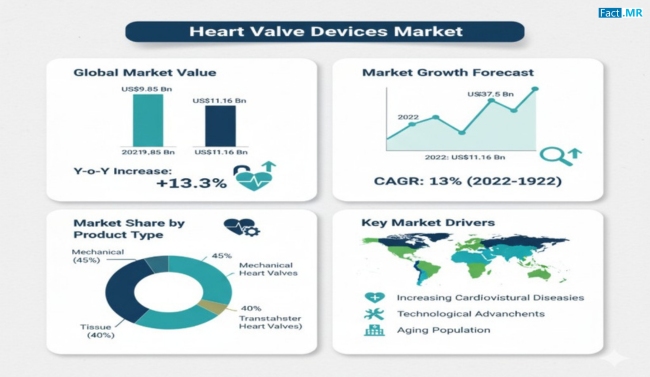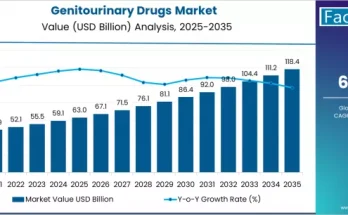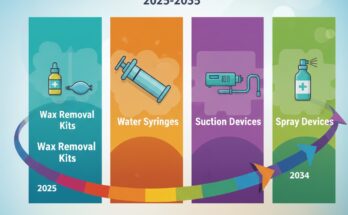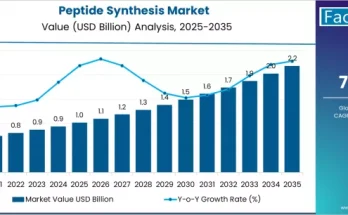Cardiovascular diseases remain a leading cause of morbidity and mortality worldwide, making heart valve disorders a critical area of concern. Heart valve devices, including mechanical, biological, and transcatheter valves, have transformed the management of these conditions. By enabling precise repair or replacement of defective valves, these devices improve patient outcomes, reduce complications, and enhance the quality of life. The heart valve devices market has emerged as a vital segment within the healthcare ecosystem, driven by technological innovation, increasing prevalence of cardiovascular diseases, and growing demand for minimally invasive procedures.
Market Overview:
Heart valve devices encompass a broad range of products, including mechanical valves, biological valves, and transcatheter valves. Mechanical valves are durable and long-lasting, often preferred for younger patients, while biological valves are derived from animal or human tissues, offering a more natural function and reduced need for long-term anticoagulation. Transcatheter valves provide a minimally invasive alternative, particularly suitable for high-risk patients who cannot undergo open-heart surgery. The market growth is propelled by rising awareness of valve disorders, technological advancements in device design, and expanding healthcare infrastructure across the globe.
Regional Insights:
North America remains a dominant region in the heart valve devices market, supported by advanced healthcare facilities, increasing adoption of innovative cardiac interventions, and strong regulatory frameworks. Europe closely follows, driven by well-established cardiac care systems and government initiatives to improve cardiovascular health. Asia-Pacific is emerging as a significant growth hub, fueled by a rising geriatric population, increasing prevalence of heart diseases, and ongoing investments in healthcare infrastructure. Countries like China, India, and Japan are witnessing a surge in hospital construction and adoption of minimally invasive cardiac procedures, creating robust demand for heart valve devices.
Key Trends & Forecast:
- Minimally Invasive Procedures:The shift toward transcatheter heart valve replacements is redefining treatment standards, offering quicker recovery and lower procedural risks.
- Technological Advancements:Innovations in valve design, durability, and biocompatibility are enhancing patient outcomes and device performance.
- Rising Geriatric Population:An aging global population is increasing the incidence of heart valve disorders, driving demand for both surgical and non-surgical interventions.
- Healthcare Infrastructure Expansion:Investments in hospitals and cardiac care centers worldwide are expanding access to advanced heart valve treatments.
Applications & End-Use Outlook:
Heart valve devices find extensive application in the treatment of aortic stenosis, mitral regurgitation, and other valvular heart diseases. Transcatheter valves are gaining popularity due to their minimally invasive nature, reducing hospitalization times and improving patient recovery. Mechanical and biological valves remain standard solutions in surgical valve replacement procedures. Hospitals and ambulatory surgical centers represent the primary end-users, as these facilities are equipped to perform complex cardiac surgeries and catheter-based interventions. The rising prevalence of cardiac disorders and increasing patient awareness of treatment options are further fueling adoption in clinical settings.
Challenges & Market Restraints:
Despite significant growth opportunities, the heart valve devices market faces challenges. Surgical interventions carry risks such as infection, bleeding, and post-operative complications, which can deter some patients from opting for surgery. High costs associated with advanced devices and procedures, along with stringent regulatory requirements, may also limit accessibility in certain regions. Additionally, the shortage of skilled cardiac surgeons and trained personnel can impact device utilization and market expansion.
Impact of Technological Innovations:
Technological innovation is central to the market’s growth trajectory. Advancements in transcatheter procedures, 3D imaging for pre-surgical planning, and development of biocompatible materials are enhancing procedural safety and efficacy. Manufacturers are increasingly focusing on research and development to improve valve durability, reduce procedural complications, and expand the range of treatable patient profiles. These innovations not only boost market adoption but also contribute to the overall efficiency of cardiac care delivery.
Competitive Landscape:
The heart valve devices market is highly competitive, with key players investing heavily in research, product development, and strategic partnerships. Leading companies are introducing next-generation transcatheter valves and enhanced biological and mechanical valves to maintain market leadership. Collaboration with healthcare providers for product customization, compliance with regulatory standards, and proactive clinical support are emerging as differentiators in the market. Continuous innovation and responsiveness to patient and clinician needs remain critical for sustained growth.
Conclusion:
The heart valve devices market is pivotal to modern cardiac care, offering solutions that enhance patient outcomes, reduce procedural risks, and address a growing burden of cardiovascular diseases. With increasing adoption of minimally invasive procedures, technological advancements, and expanding healthcare infrastructure, the market is poised for sustained growth. Understanding emerging trends, regional dynamics, and innovations is essential for manufacturers, healthcare providers, and stakeholders seeking to improve cardiac care delivery and patient quality of life.
Browse Full Report – https://www.factmr.com/report/4759/heart-valve-devices-market



